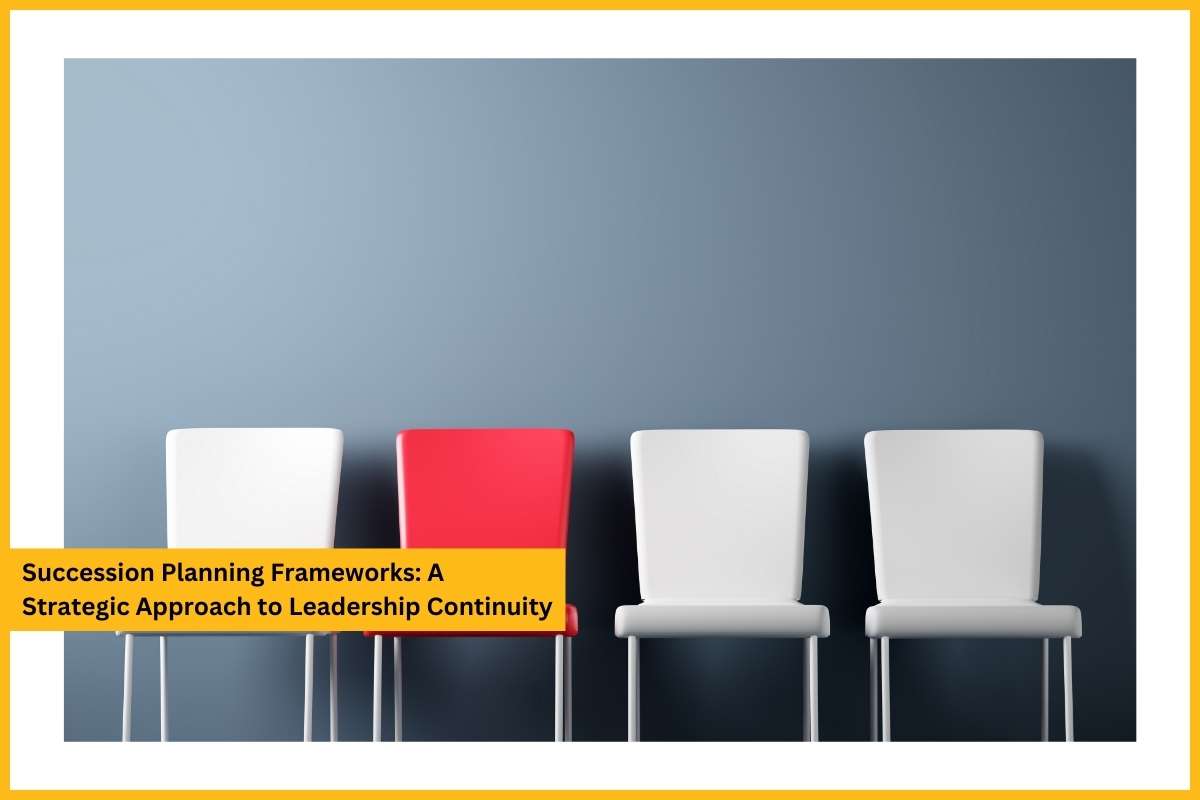Succession planning is a critical process in organizations, ensuring that leadership roles and key positions are filled seamlessly when they become vacant. Whether due to retirement, resignation, or unforeseen circumstances, organizations need to be prepared for leadership changes. Succession planning frameworks offer a structured approach to identifying, developing, and transitioning leaders, making it easier to maintain business continuity and long-term success.
In this article, we will explore the concept of succession planning frameworks, the key components involved, and why they are essential for organizational sustainability.
What are Succession Planning Frameworks?
These are structured models or systems designed to help organizations proactively identify potential leaders and prepare them for future roles. These frameworks offer a systematic approach to assessing current talent, developing leadership capabilities, and managing leadership transitions.
By adopting a succession planning framework, organizations can ensure that they are not caught off guard by sudden leadership changes. Instead of scrambling to find replacements, companies can rely on a pool of well-prepared candidates who are ready to step into leadership roles when needed. This minimizes disruptions, reduces risks, and ensures the organization’s continued success.
Key Components of Succession Planning Frameworks
Effective succession planning frameworks typically involve several key components that work together to build a sustainable pipeline of future leaders. Let’s take a closer look at each of these components:
1. Talent Identification
One of the first steps in any succession planning framework is identifying key positions and potential successors. Organizations must assess which roles are critical to their long-term success and identify individuals within the organization who have the potential to fill these positions.
This involves evaluating employees’ performance, skills, and leadership potential. Tools like performance reviews, 360-degree feedback, and leadership assessments can be valuable in identifying high-potential employees who are capable of taking on greater responsibilities.
2. Development of Leadership Skills

Once potential successors are identified, the next step in a succession planning framework is to develop their leadership skills. This involves providing training, mentorship, and opportunities for growth that will prepare these individuals for future leadership roles.
Organizations can offer leadership development programs, coaching, and job rotations to expose high-potential employees to different areas of the business. This not only builds their skills but also gives them a broader understanding of the organization’s operations and strategic goals.
3. Talent Pool Management
A key feature of successful succession planning frameworks is maintaining a dynamic talent pool. Organizations must continuously monitor and update their talent pool to reflect changing business needs and employee progress. Succession planning is not a one-time event; it requires ongoing evaluation and adjustments.
This ensures that the organization always has a pool of qualified candidates who are ready to step into leadership roles when the need arises. Regularly reviewing the talent pool and assessing employees’ development helps organizations stay agile and responsive to changes in the business environment.
4. Leadership Transition Plans
Succession planning frameworks also include a structured plan for leadership transitions. When a leadership position becomes vacant, the organization needs a clear process for transferring responsibilities and ensuring a smooth transition.
This involves clear communication with the outgoing leader, the incoming successor, and the rest of the organization. A well-executed transition plan minimizes disruption, maintains productivity, and ensures that the organization’s strategic goals remain on track.
5. Performance Measurement and Feedback
Finally, an essential component of any succession planning framework is performance measurement and feedback. Organizations must evaluate the effectiveness of their succession planning efforts by measuring the performance of successors in their new roles and the impact on the organization as a whole.
Regular feedback helps identify areas for improvement in the succession planning process and ensures that successors continue to develop and excel in their new positions. This feedback loop is critical for refining and enhancing the succession planning framework over time.
Benefits of Succession Planning Frameworks
Implementing a well-defined succession planning framework offers several key benefits to organizations:
1. Business Continuity

It ensures that leadership roles are filled without disruption, allowing the organization to continue operating smoothly. This is especially important during times of unexpected leadership changes, such as sudden resignations or retirements.
By having a pipeline of prepared leaders, organizations can avoid the chaos and uncertainty that often accompany leadership transitions.
2. Employee Development and Retention
Investing in succession planning shows employees that the organization values their growth and development. High-potential employees are more likely to stay with an organization that provides them with clear career paths and opportunities for advancement.
Succession planning frameworks not only help identify and develop future leaders but also improve employee engagement and retention by demonstrating a commitment to internal talent development.
3. Risk Mitigation
Leadership vacancies can pose significant risks to an organization, especially if key roles are left unfilled for an extended period. Succession planning frameworks mitigate these risks by ensuring that qualified successors are ready to step into leadership positions when needed.
This reduces the likelihood of costly disruptions, operational setbacks, and reputational damage.
4. Strategic Alignment
Effective succession planning frameworks align with the organization’s long-term strategic goals. By preparing future leaders who understand the company’s vision, mission, and values, organizations can ensure that their leadership transitions support their broader strategic objectives.
This alignment helps maintain organizational focus and ensures that the company stays on track to achieve its goals, even during times of leadership change.
5. Improved Organizational Resilience

Succession planning frameworks build resilience by creating a culture of leadership development and continuous improvement. Organizations that invest in succession planning are better equipped to adapt to changing market conditions, new challenges, and evolving business environments.
By cultivating a deep bench of talented leaders, these organizations can respond more effectively to both opportunities and challenges.
Implementing Succession Planning Frameworks: Best Practices
To maximize the benefits of succession planning frameworks, organizations should follow these best practices:
- Start Early: Succession planning should begin well before a leadership vacancy occurs. The earlier organizations start identifying and developing future leaders, the more prepared they will be when transitions happen.
- Involve Leadership: Succession planning should be a collaborative effort involving senior leaders, HR, and other key stakeholders. Leadership involvement ensures that the process aligns with the organization’s strategic vision and goals.
- Prioritize Diversity: When developing these frameworks, it’s important to prioritize diversity and inclusion. A diverse leadership pipeline brings fresh perspectives and innovation to the organization.
- Regularly Update the Framework: Succession planning is not a one-time event; it requires regular review and updates to reflect changing business needs and talent dynamics.
- Communicate the Process: Ensure transparency and communication throughout the succession planning process. Employees should understand the organization’s commitment to leadership development and how the process works.
Conclusion
In today’s fast-paced business environment, organizations cannot afford to overlook the importance of succession planning. By implementing robust succession planning frameworks, companies can ensure leadership continuity, mitigate risks, and align their future leaders with strategic goals.
A well-executed succession planning framework goes beyond filling vacant positions; it fosters a culture of growth, resilience, and long-term success.
Did you find this article helpful? Visit more of our blogs! Business Wolf Magazine






